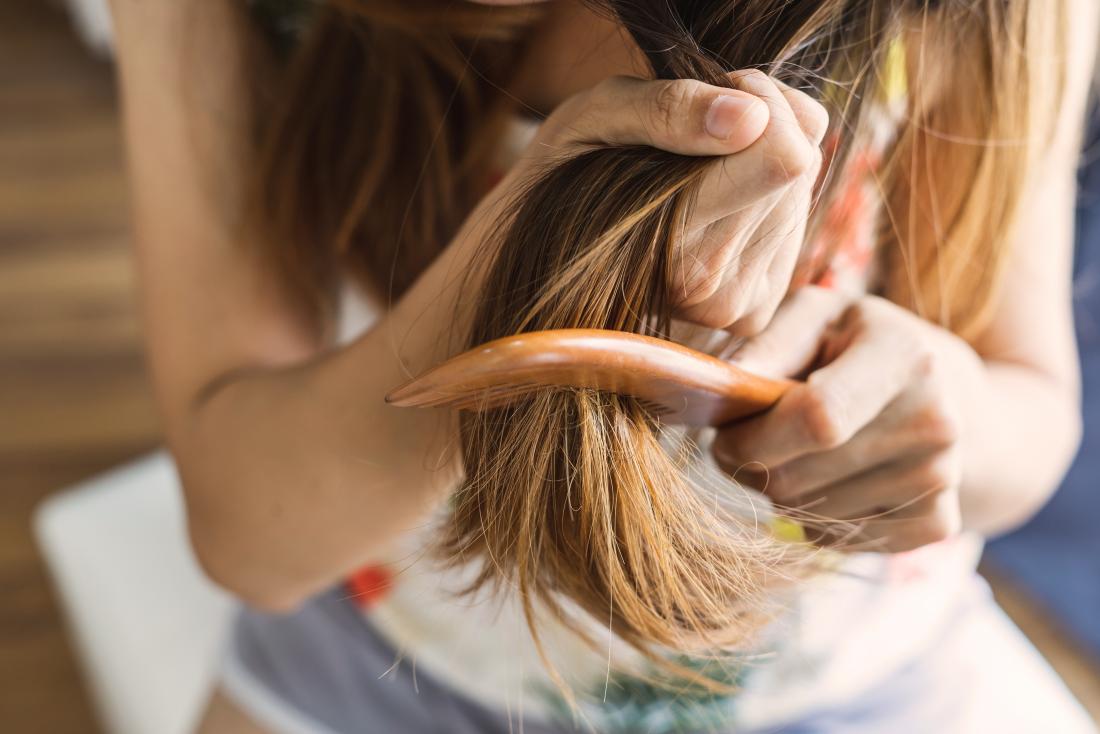We have all experienced this coastal phenomenon. Spent hours getting your hairstyle just right, step out the door, and it is immediately turned frizzing and unmanageable. So what the heck is going on? Humidity, that’s what. The high humidity, in combination with the high temperatures of the coastal climate, is the ultimate enemy of the gorgeous hairstyle.
Table of Contents
Frizzy Hair Because of Moisture
Although it doesn’t make much sense at first glance, the moisture content in the air is actually making your hair frizzy. But when we take a look at what is really going on, it makes perfect sense.
Problem is Osmosis
Osmosis is the movement of water across a semi-permeable membrane from an area of high concentration of water to an area of low concentration of water. The inside of the hair shaft generally has less water in it than the air on a high humidity day. This makes the hair shaft an area of low concentration of water and the air an area of high concentration of water. The water will move from the air and into the hair shaft as a natural process. Meaning that the cortex of the hair shaft will readily absorb water when exposed to it.
As the hair shaft swells up from water absorption, the cuticle will begin to flair out. On a microscopic level, this will cause the individual hair shafts to be kind of sticking, clumping, and bushy together. Over plump and flared up, a hairstyle cannot hold under these conditions.
Humidity and Heat the Second Contributor
Add to the mix high temperatures, and the effect of the humidity will be even faster. Heat naturally opens the cuticle and allows the humidity to enter the cortex even faster, but that’s not all. An increase in the temperature of the humid air will increase the pressure that air is under, which will, in turn, increase the pressure exerted on the semi-permeable membrane. In essence, higher temperatures will force the water into the cortex even faster than on a cool day.
Damaged Hair
Dry or damaged hair can compound these problems. When the cuticle or protective barrier for the cortex is broken or worn away. This exposes the cortex to the open air. If the cortex has no defense against the humidity, then the effect of the humidity will occur much faster. In the case of dry hair, remember our enemy osmosis. If the area of low concentration of water is really low, the water will move into the hair shaft that much easier.
Then How to Protect Hair?
Step 1
The first and most important step is to consult with your stylist to make sure you are using the best hair care regimen for your hair type. If you have frequent problems with frizzy and humid, unmanageable hair, the chances are that you have dry hair. Using the proper cleansing and nourishing products is an important step to combating humidity.
Step 2
Next, make sure that you are using the right styling products. When styling, your first step before blow-drying or air-drying your hair should be to apply a leave-in conditioner. A leave-in conditioner is the first step to creating a barrier around your hair that will prevent not only styling damage but also help to keep the environment out of the cortex of the hair. There are many types of leave-in conditioners, and both price and performance influence the decision on which one to buy. The best recommendation from us is to consult with your hair care specialists. Or if you are traveling and want to search, then hair treatments near me can help you find the best service provider in that area.
Avoid Volumizing Products
If you have thick and full-bodied hair or if you have frequent problems with frizzy hair, avoid using volumizing products. These products are great when used to add volume to fine hair types but not so good when trying to combat humidity. These products are designed to swell the hair shaft, adding to the volume and body of the overall hairstyle. If you are trying to stop or minimize the effects of humidity, starting out with a swollen hair shaft will only aid humidity in devastating your hairstyle.












